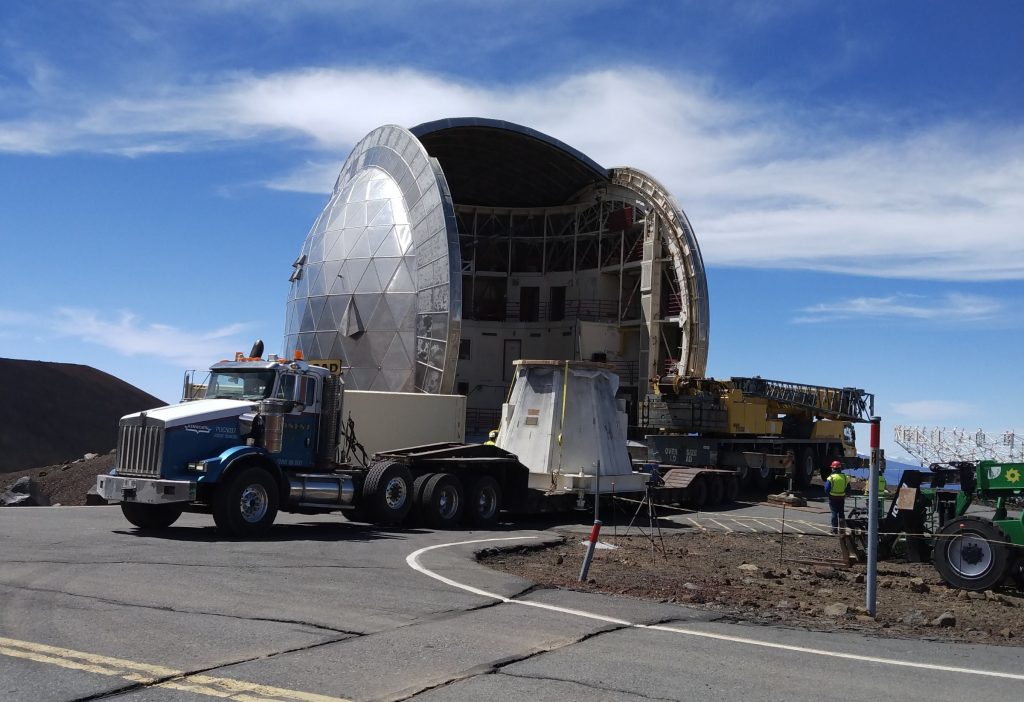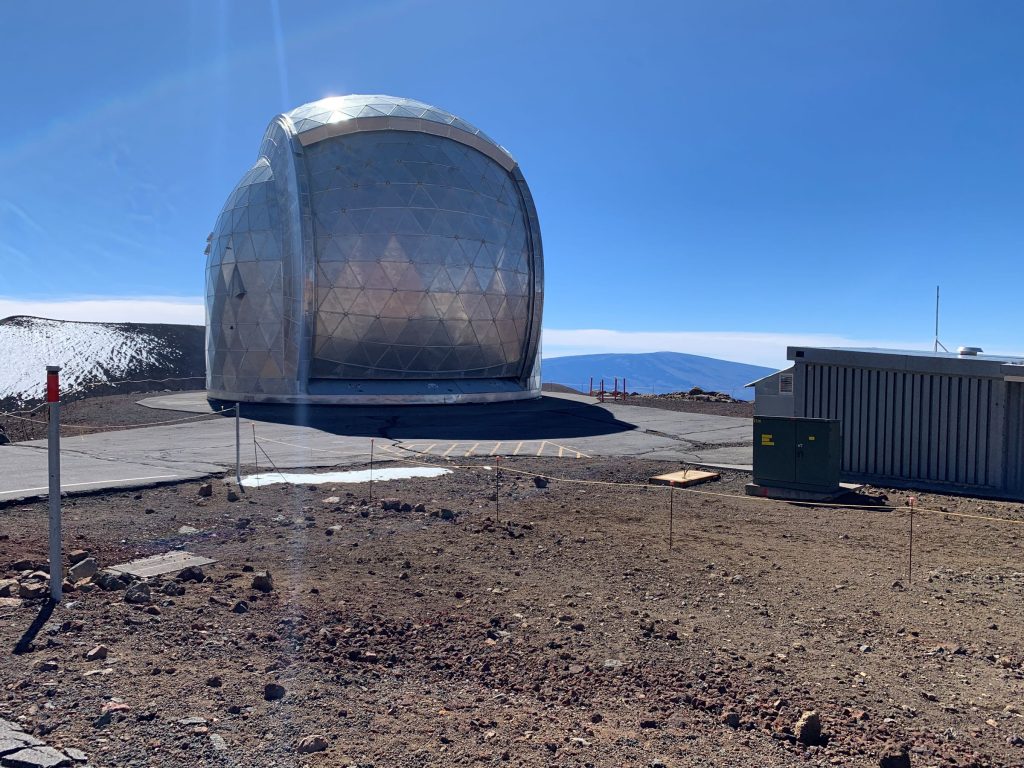Telescope removed from Caltech Submillimeter Observatory atop Maunakea; decommissioning paused until spring
The Leighton telescope has been taken out of the Caltech Submillimeter Observatory and removed from Maunakea on the Big Island for shipment to Chile for re-use.
Deconstruction of the observatory and restoration of the site will resume after winter.

“The [Caltech Submillimeter Observatory] decommissioning is a complex and multi-phase project,” said Caltech physics professor and Caltech Submillimeter Observatory Director Sunil Golwala. “We made a lot of progress this summer and fall. In the spring, when weather permits, we will resume decommissioning with the removal of the building that housed the telescope and restoration of the site.”
Other accomplishments during the first phase of decommissioning include:
- The cesspool was confirmed to contain no remaining liquid contents.
- Interior demolition began. Two roll-off containers were filled with debris, mainly insulation, drywall and plywood, and removed from Maunakea.
- Electrical power to the observatory was cut off and the main circuit breaker shut off. The electrical transformer feeding the site will be removed by Hawaiian Electric.
- The site was inspected for rodents, as required by the building permit.
- Underground utilities, including sewer, water, electrical, communication and grounding grids, were mapped using ground-penetrating radar so they can be easily located during the demolition process.
An independent decommissioning construction monitor and cultural monitor were present at all appropriate times during the first phase.
When decommissioning resumes in the spring of 2024, the following will occur:
- Interior demolition will be completed and the observatory dome removed.
- The foundation will be removed along with the cesspool, its remaining solid contents and all underground utilities.
- The ground underneath the foundation and the cesspool will be sampled for chemicals of potential concern.
- The site will be monitored for the appearance of invasive species.
- The land will be restored to the fullest extent consistent with the permits guiding the decommissioning.
Cultural, construction and archeological monitors will also be present at all appropriate times during the second phase of decommissioning.
“Caltech will update the community once decommissioning resumes next year,” Golwala said. “Following the completion of restoration, the site will be monitored for three years, primarily to document repopulation by flora and fauna.”
The cost of deconstruction and site restoration is expected to exceed $4 million and is being funded primarily by the Gordon and Betty Moore Foundation, while the removal of the telescope for reuse is being funded by the Heising-Simons Foundation.
For more information about the decommissioning, including related planning documents, permits and a list of contractors involved in the project, click here.
The Caltech Submillimeter Observatory came online in 1987 and was used by scientists at Caltech and other institutions, including almost 200 student and postdoctoral researchers. Click here for a summary of the observatory’s contributions to astronomy and astronomical instrumentation.





















